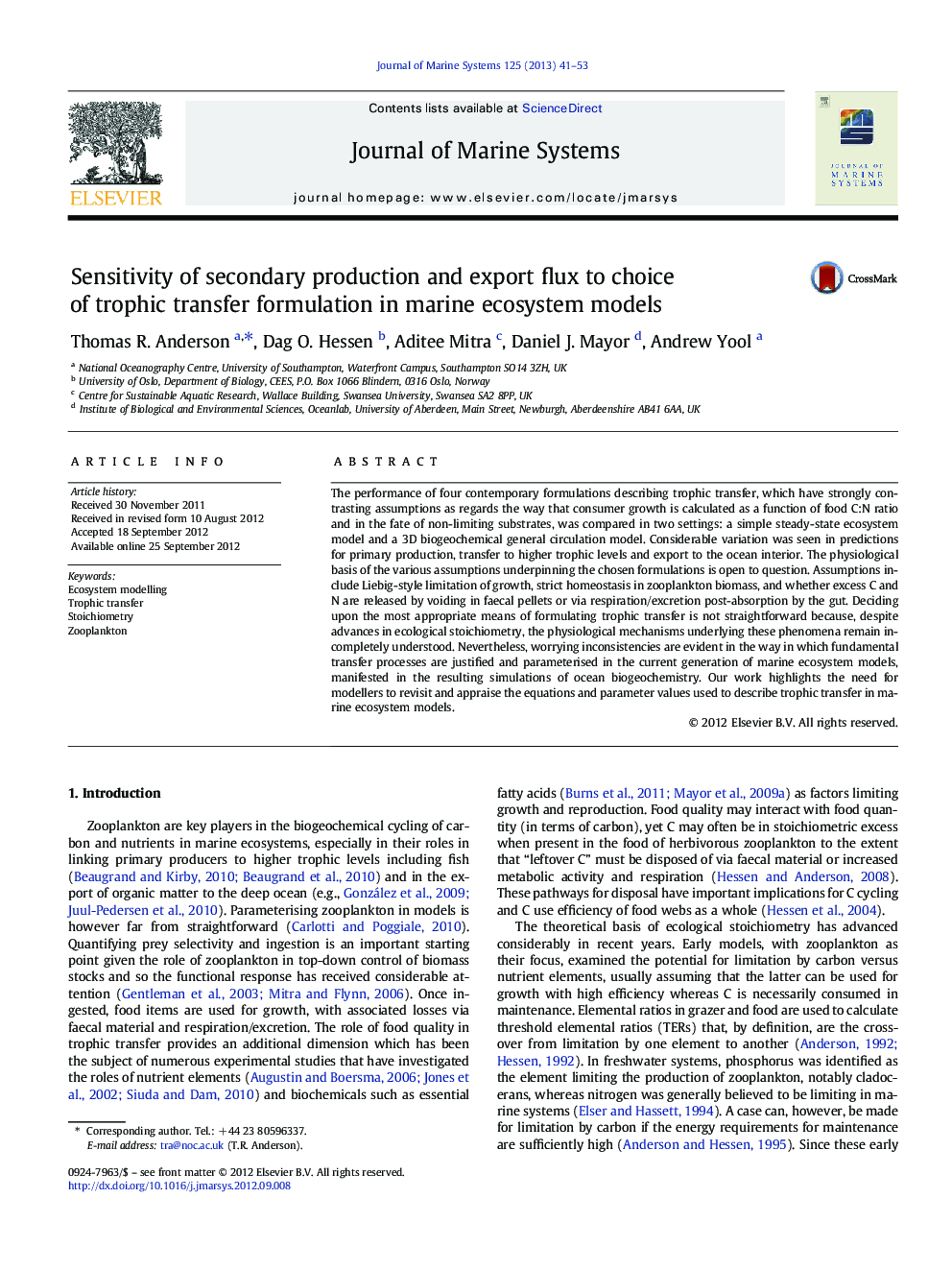| Article ID | Journal | Published Year | Pages | File Type |
|---|---|---|---|---|
| 6387206 | Journal of Marine Systems | 2013 | 13 Pages |
The performance of four contemporary formulations describing trophic transfer, which have strongly contrasting assumptions as regards the way that consumer growth is calculated as a function of food C:N ratio and in the fate of non-limiting substrates, was compared in two settings: a simple steady-state ecosystem model and a 3D biogeochemical general circulation model. Considerable variation was seen in predictions for primary production, transfer to higher trophic levels and export to the ocean interior. The physiological basis of the various assumptions underpinning the chosen formulations is open to question. Assumptions include Liebig-style limitation of growth, strict homeostasis in zooplankton biomass, and whether excess C and N are released by voiding in faecal pellets or via respiration/excretion post-absorption by the gut. Deciding upon the most appropriate means of formulating trophic transfer is not straightforward because, despite advances in ecological stoichiometry, the physiological mechanisms underlying these phenomena remain incompletely understood. Nevertheless, worrying inconsistencies are evident in the way in which fundamental transfer processes are justified and parameterised in the current generation of marine ecosystem models, manifested in the resulting simulations of ocean biogeochemistry. Our work highlights the need for modellers to revisit and appraise the equations and parameter values used to describe trophic transfer in marine ecosystem models.
